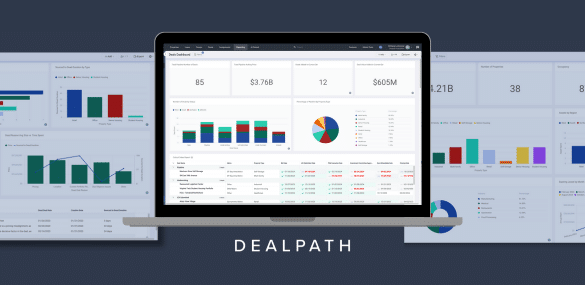The loan to value ratio is a measurement of an investment’s risk found by dividing the loan amount by the appraised value. In this blog post, we’ll break down what the loan to value ratio is, how to calculate it, why it matters for CRE lenders, and what makes a good LTV.
What Is the Loan to Value Ratio? (LTV)
For commercial real estate lenders, the loan to value ratio (LTV) determines a loan’s risk. Lenders calculate the loan to value ratio by dividing the loan amount by the property’s appraised value. Consequently, lenders can assess the loan’s alignment with their target risk profile and set terms.
The value of the LTV ratio is one factor that helps determine the lender’s risk in a debt investment. When an LTV is low, lenders fund a lower percentage of the total cost and take on less risk, as the borrower will own a relatively higher stake in the property. Conversely, a higher LTV indicates a riskier loan with a relatively higher percentage of capital at stake, often requiring higher interest rates or more strict terms for the borrower.
How to Calculate the Loan to Value Ratio (Formula)
How do you calculate the loan to value ratio?
Determining the loan to value ratio is a straightforward calculation. Simply divide the loan amount by the appraised value. The result is a percentage representing the amount of the purchase price that is secured by the loan.
Loan Amount/Appraised Value=LTV
LTV Calculation Example
Now, let’s walk through an example of calculating the loan to value ratio. In this example, let’s assume that we’re underwriting a loan for a class A multifamily property in downtown San Diego.
Appraised value: $50 Million
Loan amount: $39 Million
Based on these assumptions, we can find the LTV by following the formula.
$39,000,000/$50,000,000=0.78
In this example, the LTV is 78%, which means the loan covers 78% of the property’s value. The remaining 22% is covered by the equity investor’s cash outlay, or possibly, another source of funding.
How Do Commercial Real Estate Lenders Evaluate LTV?
Lenders rely on the loan to value ratio as one of the primary factors to analyze risk. Much of this risk hinges on a key insight: identifying the degree to which the property is leveraged.
Most directly, this value helps lenders to understand a deal’s leverage. A lower LTV ratio indicates that borrowers have a more significant stake with a higher cash outlay. From a lender’s perspective, this is often favorable, suggesting that borrowers have more skin in the game, and are therefore less likely to foreclose or walk away from their obligations. Consequently, lenders can offer better terms and lower rates.
On the other hand, a higher loan to value ratio indicates that there is more leverage, presenting additional risk. Because the borrower has a lower equity stake, they have a higher likelihood of foreclosure. Borrowers typically must accept stricter terms, and potentially, more stringent approval processes.
While critical for underwriting and decision making, the LTV is only one of numerous metrics that lenders consider.
Other key metrics that lenders typically consider when evaluating a loan include debt service coverage ratio (DSCR), debt yield and loss given default. Debt service coverage ratio measures whether or not the borrower can make monthly loan payments. Debt yield, meanwhile, indicates how quickly the lender can recoup their investment if the loan defaults. Finally, loss given default simply measures what the lender’s loss will be if the borrower defaults.
What Is a Good LTV?
So, what is a good loan to value ratio?
There is no clear-cut answer to this question; the answer hinges entirely on the lender’s target risk profile. Conservative lenders typically accept a lower LTV ratio of under 70%. Lenders with a higher risk appetite, on the other hand, might specifically target LTVs on the higher end. Many view an 80% LTV as prohibitively risky, but some lenders might approve the right situation.
Ultimately, a good LTV will be aligned to the debt fund’s target risk profile, which can vary significantly.
Digitize Loan to Value Ratios for Streamlined Analysis
As you evaluate, pass on and pursue new deals in your loan pipeline, centralizing critical mass in a proprietary deal database can supercharge your firm’s data-driven precision.
With deal management software that supports lenders’ unique needs like Dealpath, debt teams can capture more relevant data to better inform future decisions. As you record the LTV for a given pipeline deal, digitizing this information ensures that teams can tap into it for benchmarking and analysis.
For example, if you come across a similar deal in the same market, anyone on your team can easily surface the comparable to assess how these values align. One common way that debt teams act on their proprietary loan database is checking comparables to surface appraised values, which can help inform your team’s assumptions as you calculate the loan to value ratio.
Beyond individual deal evaluations, another significant advantage that lenders gain by managing their pipeline in deal management software is trend identification. With loan to value ratios from every deal you’ve evaluated in the past two years centralized in one platform, you can learn a lot about market dynamics.
Start by analyzing the loan to value ratios in each market or submarket you’ve targeted to see how LTV ratios have evolved over time, or certain markets with a higher or lower value. If you’re planning to launch a new debt fund that targets low-risk investments, for example, then you can prioritize geographies with lower-risk deals that are more likely to close. Elevating your data-driven strategy ensures that your firm is well positioned to outperform the competition.
3 Ways To Supercharge Your Debt Origination Pipeline
Tech-enabled speed, precision and efficiency could be your secret weapon for seizing opportunities before the competition. Download our eBook to learn why debt origination teams have adopted deal management software to evaluate, underwrite, and close more deals.
Download Now




